
views
Finding a Planting Location
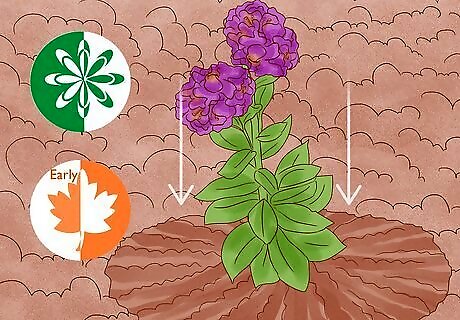
Plant your rhododendron in spring or early fall. Although you can grow rhododendron during any time of the year, they adapt best when planted in mild weather. In hot climates, early fall is preferred but in cold climates, aim for springtime. Early fall is ideal so your plant has time to grow a root system before winter.
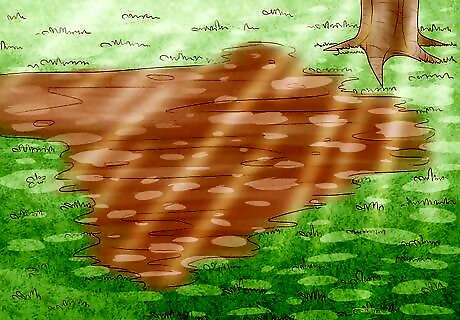
Find a spot with dappled shade. Rhododendrons thrive in areas with an equal amount of sunlight and shade every day. Choose a spot with your garden that gets both shade and sunlight a day, avoiding both deep shade and full sun. Rhododendrons planted in excessive shade usually flower less.
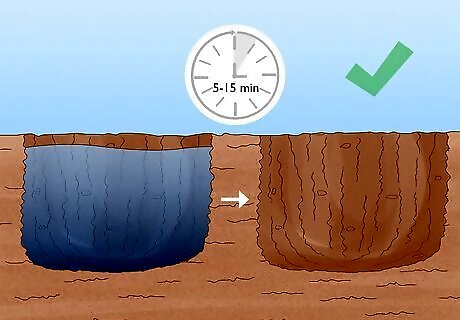
Choose well-draining soil for your rhododendron. Because they have delicate roots, rhododendrons need well-draining soil to get enough nutrients and avoid becoming waterlogged. To test its draining levels, dig a 12 inches (30 cm) hole in the soil and fill it with water, timing how long it takes to drain. If the soil takes between 5-15 minutes to drain, it is suitable for rhododendrons.
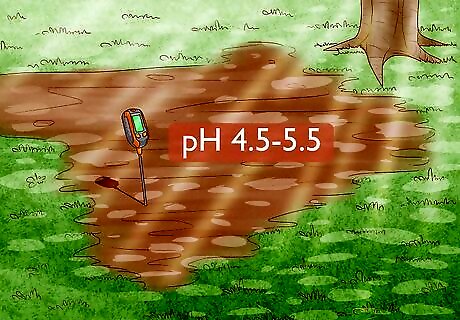
Pick acidic soil to grow your rhododendron in. The ideal acidity for your soil is 4.5-5.5 pH. You can find the soil's pH level by buying a pH soil test kit from a nursery or getting it professionally tested. To raise the soil's acidity, you will need to amend the soil by mixing pine needles, sphagnum peat, sulfur, and organic mulches. If you have tried amending your soil and it is still too alkaline, you may want to pick a different flowering shrub, such as lilac.
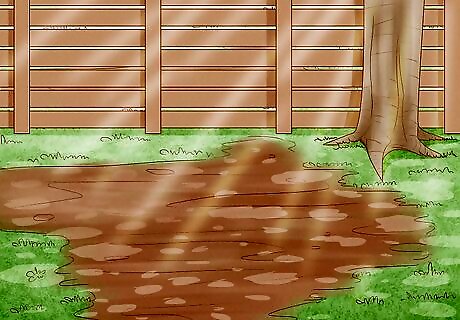
Choose a low-lying area for your rhododendrons to grow. Rhododendrons can be damaged or even killed by strong winds. To protect them from unexpected storms, choose a spot near a building, hedgerow, or fence.
Planting Rhododendron
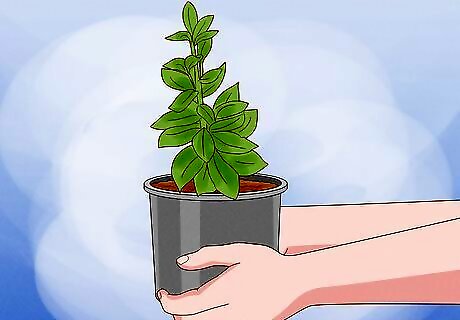
Buy healthy rhododendron plants or cuttings. When visiting your plant nursery, choose rhododendrons that are a deep green, and avoid yellowing or wilted plants. You can also take stem cuttings from existing rhododendrons and plant them to grow a new plant. Most amateur gardeners do not grow rhododendrons from seed, as they take between 2-10 years to flower. If you grow cuttings, you will need to grow the cuttings for 1-2 weeks in water so they can develop roots.
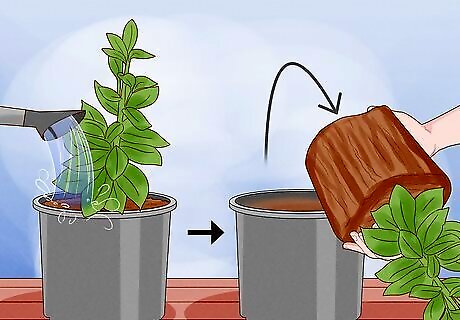
Water your rhododendron and loosen the roots before you plant it. Water the rhododendron plant, then make 2 inches (5.1 cm) cuts into the root ball equally spaced around the sides. Use your hands to loosen the root ball and pull roots near the cuts outward. This stimulates your rhododendron's root growth and helps it absorb water and nutrients.
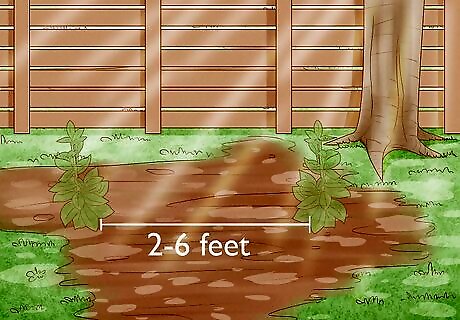
Give your rhododendron 2–6 feet (0.61–1.83 m) of space. If you are planting multiple rhododendrons, place them between 2–6 feet (0.61–1.83 m) apart depending on the plants' sizes. Give the rhododendron at least that much space from other plants if you are only planting one.
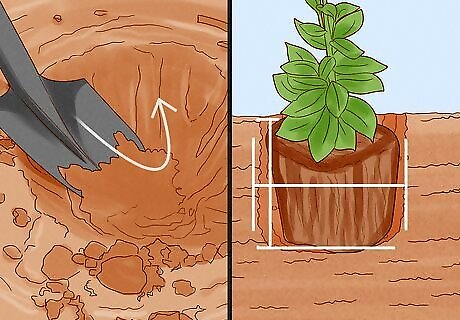
Set the rhododendron into the hole with its roots at soil level. Dig a hole twice as wide as the root ball and as deep. Set the plant into the soil, positioning it so its roots are approximately at soil level. Planting the rhododendron below soil level can cause root rot.
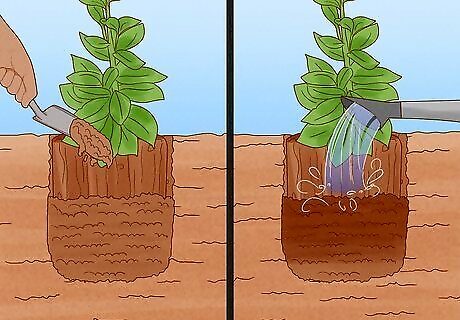
Cover the rhododendron's roots with soil, watering them at around halfway. Fill the hole back up with soil halfway, then water the rhododendron to help the soil settle. When you've finished watering, fill the rest of the hole with soil.
Caring for Rhododendron
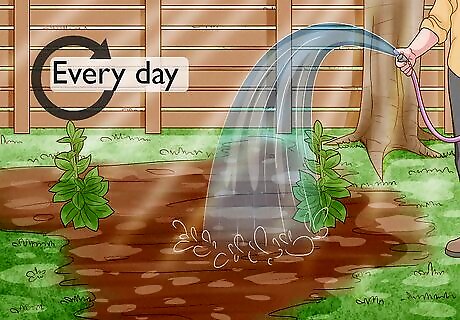
Water your plant every day for the first year. New rhododendrons need daily watering to stay healthy. After the first year, the plant should be able to get moisture on its own unless the rainfall is less than 1 inch (2.5 cm) a week. The soil surrounding your rhododendron should be moist, but not damp or watery. Overwatering your plant can cause root rot and other diseases.
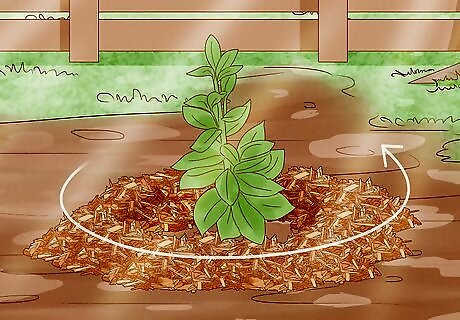
Mulch your rhododendron once a year. Mulching your plants protects its root system and keeps the soil moist. Apply 2–5 inches (5.1–12.7 cm) of an acidic mulch or compost to the soil surrounding your plant, preferably made with pine wood chips or needles. Keep the mulch 1–2 inches (2.5–5.1 cm) away from the rhododendron's trunk. You can purchase acidic mulches at most plant nurseries or garden centers.
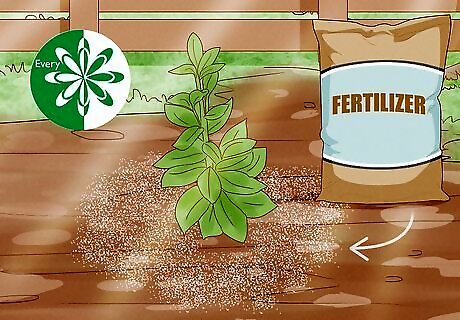
Fertilize your rhododendron every spring. Whether your rhododendron is a spring or fall bloomer, fertilize your rhododendron annually in springtime. Spray or apply a light coating of fertilizer to the rhododendron, as a heavy application can burn it. Rhododendrons thrive best if you use fertilizers with high nitrogen, phosphorus, magnesium, iron, and calcium. Look for fertilizers that are specifically labeled for rhododendrons and azaleas for the best results.
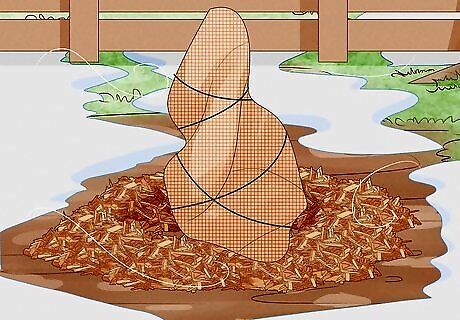
Wrap your rhododendron in burlap to protect them from harsh weather. Rhododendron shrubs need protection from snowfall and cold weather. Wrap your rhododendron branches lightly in burlap and secure it with twine. Plan on wrapping your rhododendron in late autumn before the first frost.
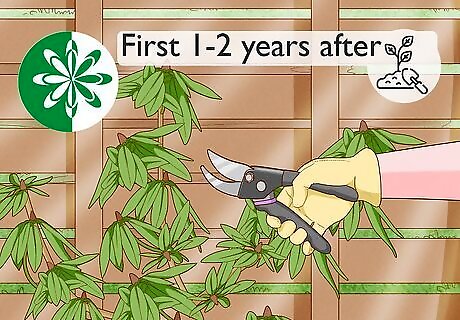
Prune young rhododendrons in springtime. Prune your rhododendron in early spring for the first 1-2 years after planting it. Pruning established plants can prevent them from blooming for several years, so let older rhododendrons grow naturally beyond cutting back 1 or 2 branches a year.

















Comments
0 comment